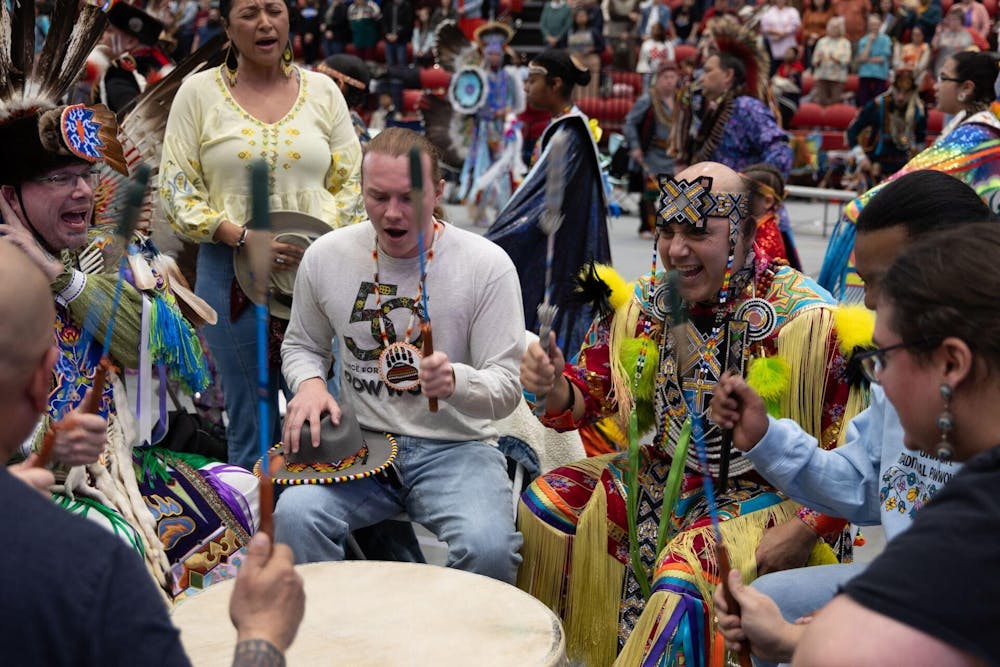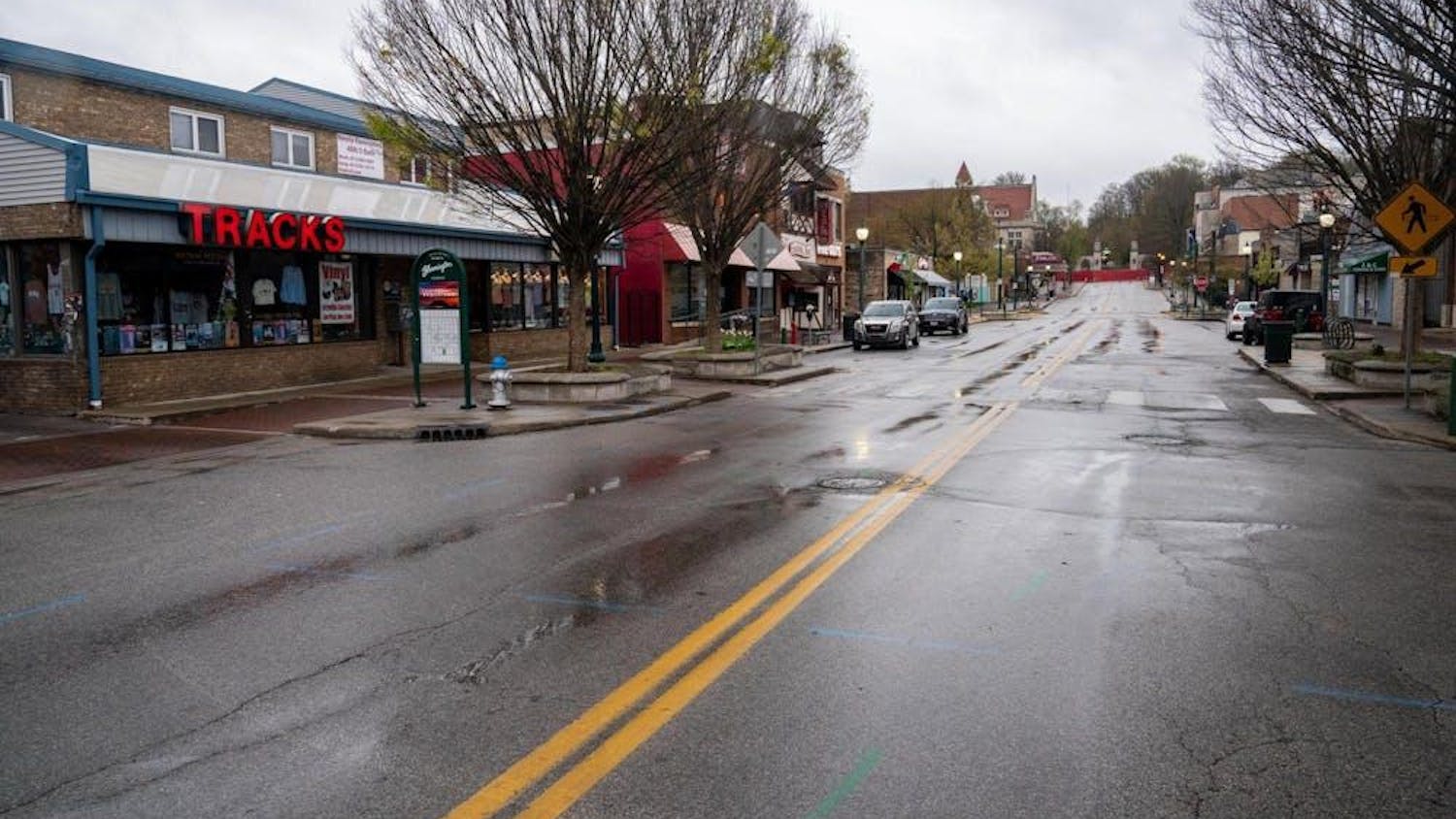The vibrations of drums beating and the echoes of the traditional Native American singing rang across Wilkinson Hall as the First Nations Educational and Cultural Center hosted its 12th Powwow on April 12.
Last year’s was canceled after IU Athletics notified the culture center its reserved space would be unavailable. The center couldn’t find other venues in time as various events for the total solar eclipse and other festivals had spaces reserved. They then decided to cancel the event.
That left people excited, and ready, for this year’s Powwow.
Adin Kawate, native education and programs assistant for FNECC, said the center began receiving questions about this year’s Powwow in January.
“I think for the community at large, people were really ready for it,” Kawate said. “We got a lot of inquiries about the cancelation last year and if we were having one this year. I think it’s been around for long enough that people really look forward to it.”
The schedule for the 9-hour event featured performances from Native American drum groups like Ribbon Town Singers, Eagle Flight Singers, Iron Bear and Horse Thief. There were also dances performed by professional head dancers Katy Isennock and Johnston Taylor. Traditional food, crafts and drinks were also available.
According to the FNECC website, IU’s Traditional Powwow attracts hundreds of visitors each year. It’s a time when generations come together to participate in song and dance to celebrate the diversity of contemporary Native American tribal identity.
“This Powwow probably had one of the greatest engagements with local Native communities,” Kawate said. “We have built relationships with a number of our original tribes from the area of Bloomington that are recognized in our land acknowledgement. For the first time, we had a large turnout from our Native friends.”
IU was built on the Indigenous and ancestral homelands of the Miami, Delaware, Potawatomi and Shawnee people. Sherene Ing, director of the FNECC, said that the event had received positive engagement from both members of the Potawatomi and Shawnee tribes. Other dancers that live in surrounding states attended this year’s Powwow as well.
“Starting in my role, I was able to take some time to visit with some of the communities nearby,” Ing said. “Now they’re our friends and I really appreciated that they showed up to support us and to dance and sing with us over the weekend.”
The modern Powwow have their roots in the historic societies of the Southern and Northern Plains. According to the Smithsonian Center for Folklife and Cultural Heritage, the intertribal exchange between the Plains tribes occurred after the U.S. government seized land from people from both the Southern and Northern Plains in the late 19th century.
Now, Powwows are a place for Native American people representing all tribal backgrounds to join together and share experiences, reconnect with old friends and make new ones.
Kawate said this idea was reflected during the inner tribal dance toward the end of the night. Anyone attending could come and dance on the gym floor.
“When you see the inner tribal, the stands look empty, but the circle looks really full,” Kawate said. “Native people, local Bloomington community, everybody was in the circle and that was the telling sign for me that the Powwow was successful, and that people were really excited to be there.”
Despite scheduling and venue issues that led to the cancelation of last year’s event, the culture center experienced less conflict this year in planning. They had the help of many communities such as IU Corps, IU Athletics and FireHouse Broadcasting.
Kawate said that the planning of large events like these can be chaotic because of all the moving pieces both with performances and behind the scenes. However, according to her, the chaos was worth the result.
“There’s something really special about creating space for all different kinds of communities at an institution like IU,” Kawate said. “The more Native guests we bring in, the more the community just explodes and blossoms. Everyone leaves these experiences feeling good and feeling like they belong, and that’s important.”
While last year’s IU Traditional Powwow was cancelled, both Kawate and Ing have hope that this tradition will live on.
“We’re in a period of uncertainty right now, with lots of things going on locally and in the country,” Ing said. “I’m hoping that things will be good next year and that we will be able to provide the space once more for the community.”






